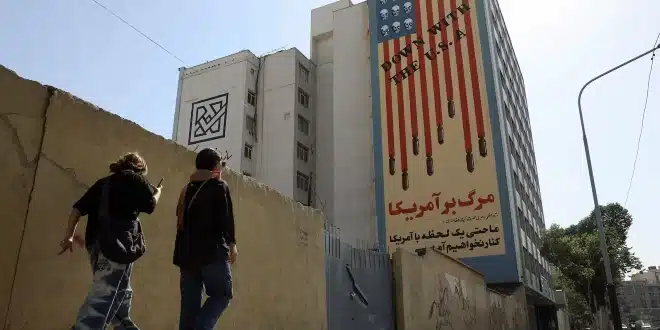The United States is repositioning key naval and military assets in the Middle East in anticipation of a potential Iranian response to recent Israeli airstrikes. According to two U.S. defense officials, the move includes the redeployment of Navy vessels with missile defense capabilities and other precautionary adjustments to regional force posture.
Among the measures taken, the guided-missile destroyer USS Thomas Hudner has been ordered to leave the western Mediterranean and head toward the eastern part of the sea. The vessel is equipped to intercept ballistic threats. A second destroyer has also received instructions to advance into a more accessible position, where it could be deployed if requested by the White House.
Heightened Readiness as Strategic Meeting Takes Place
U.S. President Donald Trump convened a session with his National Security Council principals on Friday to evaluate the rapidly evolving situation. The military adjustments, which had not been officially disclosed at the time, were confirmed by officials speaking on condition of anonymity.
In recent days, American forces in the region have been implementing protective measures. These include voluntary departures of family members of military personnel stationed at regional bases, designed to minimize risk in the event of a wider conflict with Iran.
Troop Numbers Surge Amid Regional Tensions
Current troop levels in the Middle East have increased from the standard 30,000 to approximately 40,000. This buildup, according to a third official, reflects continued instability and increased threats, including attacks on maritime shipping by Houthi forces in the Red Sea and heightened frictions between Israel and Iran. The regional troop presence had reached 43,000 at its peak in October 2024 during a previous escalation period.
The U.S. Navy maintains the flexibility to dispatch further assets if needed. The USS Carl Vinson, an aircraft carrier currently in the Arabian Sea, is the only carrier operating in the broader area at this time. However, other carriers, including the USS Nimitz stationed in the Indo-Pacific and the USS George Washington recently departing its Japanese port, are available for deployment to the Middle East if conditions warrant.
Background of Escalation and Prior Engagements
U.S. military activity in the region intensified in late 2023 after the October 7 Hamas-led assault on Israel, which triggered the ongoing war in Gaza. The Biden administration at the time responded by dispatching naval forces to the area to deter potential threats from Hezbollah and Iran.
More recently, on October 1, 2024, U.S. Navy destroyers engaged in active defense of Israel, firing multiple interceptor missiles as Iran launched over 200 projectiles toward Israeli territory. This incident marked one of the most significant U.S. military responses in support of Israel during the current conflict.


